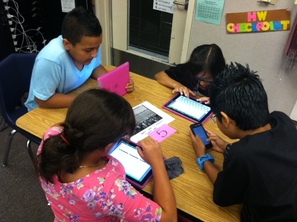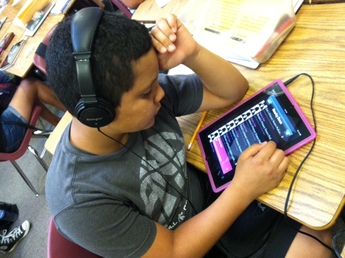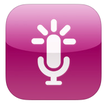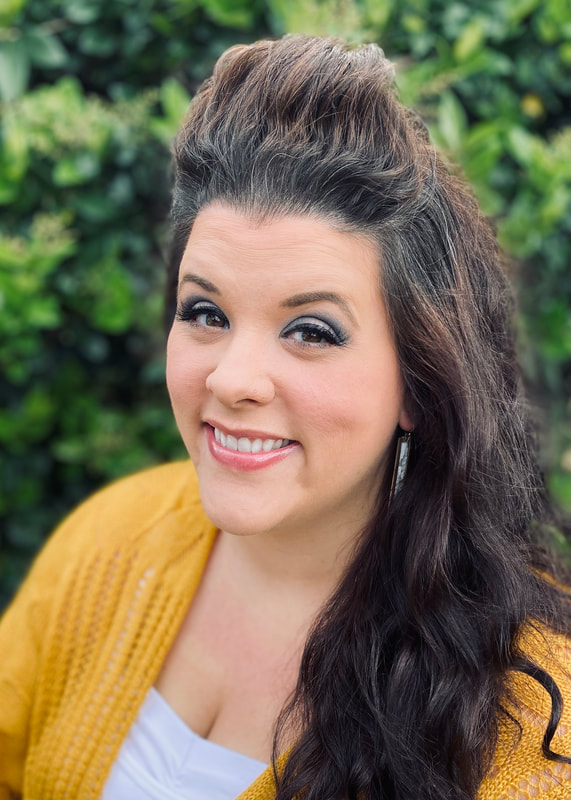 We are a little over a month into the school year here in PSUSD, and I realized today while teaching my morning block of 6th graders that as a class we have finally hit our stride. This is my second year as a BYOD teacher, last year's pilot having been a resounding success. (Thank goodness!) This is also my first year teaching fully Common Core lessons, which has been an easier transition than expected. Since I've been approached quite bit recently, both at my school site and via Twitter, regarding the Common Core lesson planning process, I thought I'd take a moment to blog about it to give others a starting point. Unpack the standard and begin with the end in mind. The first thing I do when planning a CCSS lesson is unpack the standard to decide what skills are expected to reach mastery. There are a lot of fantastic resources on the web that can help you with this step so that you don't have to reinvent the wheel. A few of my favorites are these unpacked "I Can..." statements in student-friendly language and the unpacked ELA Common Core Templates from the Tulare County Office of Education. Use these to help establish your learning targets. Following the unpacking process, consider what the endgame is for students. What will they produce? What will they do to show their learning along the way and once the sequence of lessons is complete? Will they be writing arguments? Engaging in a debate? Recording podcasts? Producing a movie or telling some other kind of digital story? The importance of these questions can not be overstated. Consider the CCSS Shifts, then begin building a series of lessons. There are 7 key shifts in Common Core ELA instruction, which are important to remember. I've outlined these shifts on the following Haiku Deck: When lesson planning, I generally follow the cognitively guided instruction model, which is a gradual release of control until students are able to work independently. Why do I follow this particular model? Because it was adopted universally by my district and that is the expectation. However, something that I have discovered is that, while some feel this instructional model lends itself best to direct instruction, it can also be adapted for inquiry and project-based learning. The concept is, essentially: "I do. We do. You do together. You do independently." The phases of instruction can be rearranged to suit the style of lesson. So, for an inquiry-based lesson, you may choose to lead with the "You Do Together" portion as groups problem solve by brainstorming possible solutions; the "I Do" portion may be limited to simply issuing instructions to express the parameters of the investigation. Create opportunities for communication, collaboration, critical thinking, and creativity. Because my classroom is comprised of so many English Language Learners, providing opportunities for students to work together to communicate their ideas with an authentic audience is important. A few days ago, in the midst of an ELA unit based around the topic of Japanese internment during WWII, my students analyzed primary source photos in groups. I pulled the images from the Library of Congress Japanese internment collection, and had kids rotate through five different centers in groups. Each center had a different image they had to analyze. Students used the Primary Source Analysis Tool (also from the Library of Congress), on which they recorded observations, made reflections, and asked questions about each image. (The suggestions on this document were helpful in terms of getting group conversations started.) Group conversations were dynamic and students were highly engaged because they had previously read and annotated the full text of Executive Order 9066 and Instructions to Japanese-Americans on Bainbridge Island. Following the rotations, students used sentences frames to help them write a podcast about their favorite image from the day and how it connected to their reading. Here is an example podcast one of my students created using the AudioBoo app:
Recognize that the CCSS is student-centered. When I first started teaching, I used to lose my voice by the end of the day because I did so much talking throughout each class period. Nine years later, this is no longer an issue because my students work harder than I do while they are in class. I want to make sure that their learning is genuine, that they are completely engaged in the process, that they have real choices about how to express mastery, and that their brain cells get a workout without realizing that it's "work."
Ultimately, the CCSS transition will be easier for some than others. Districts and school sites will establish different mandates, I am sure. Teachers will likely receive conflicting messages, as is generally true in any kind of new implementation. The best advice I have for anyone who is making the transition is to hold fast to your PLN, ask questions, collaborate, and keep what's good for students at the forefront of your decision-making process. What's your best CCSS lesson planning recommendation? What tools are essential to your CCSS plans? Please comment and share, or continue the conversation on Twitter.
0 Comments
|
Author: Jessica PackCalifornia Teacher of the Year. CUE Outstanding Educator 2015. DIGICOM Learning Teacher Consultant. 6th Grade Teacher. Passionate about gamification, Minecraft, digital story-telling, and fostering student voices. Download:Archives
June 2020
Categories
All
|



 RSS Feed
RSS Feed